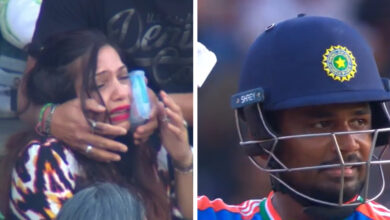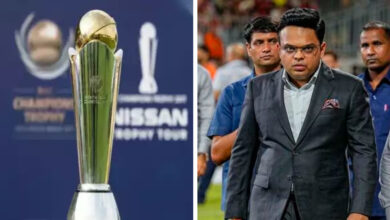Will WPL provide return on investment?

On Saturday, footwear giant Puma tweeted a video of a cricketer taking guard and asked people to guess the identity of their ‘newest ambassador’.
Of the thousands of responses, 80 percent named a male cricketer, the company revealed on Monday when they announced the tie-up with India’s all-format captain Harmanpreet Kaur.
Signing one of the biggest female stars makes sense with the Women’s Premier League (WPL) around the corner. Big money was spent recently —Rs 5,651 crore — to buy broadcast and franchise rights for the league and its five teams.
Yet the replies to the ‘guess who’ question in the clever marketing promo alluded to the plain fact that despite her growing popularity, Harmanpreet still plays cricket in the shadows of the Virat Kohlis and Rohit Sharmas. Packaging the WPL as a women’s version of the hugely-popular Indian Premier League (IPL) is no guarantee that fans, with their loyalties in the men’s game, will watch it at a stadium or their homes.
Like every start-up, the WPL has its unknowns.
With a separate window before the IPL, it will have to stand on its own feet.
Viacom18 is paying the Board of Control for Cricket in India (BCCI) Rs 7.09 crore per WPL game, a fraction compared to what they shell out for digital rights of an IPL game. The five-year WPL deal cost Viacom18 Rs 951 crore, which according to a veteran broadcaster, is a punt.
“If I was still in the broadcasting business, I would have said that the WPL is a good boat to miss, because if it succeeds, it does not change the universe. If it fails, it will stretch your balance sheet. The WPL is not a must-have thing. It will get one-fourth or one-fifth of the attention of the men’s game,” Harish Thawani, the founder of Nimbus Sport, the former rights-holders for Indian cricket, said. “But is it going to completely flop? My answer is ‘no’. But is it going to become one of those things to look forward to like the men’s IPL?”
The extent of success of the WPL’s first season will determine if Viacom overpaid for the broadcast rights, say industry watchers.
Vinit Karnik, head of sports, Esports and Entertainment, GroupM (South Asia), was a consultant for Royal Challengers Bangalore, one of the three IPL teams that successfully bid for a WPL side.
“Take the example of the IPL. After the first couple of years, the media rights value got corrected upwards. This happened as IPL became a successful media property delivering high reach and viewership. Hence women’s cricket will need to be built bottom-up and marketed well. The first season is going to be very crucial in determining the value paid Viacom for the media rights,” Karnik said.
Will more women watch?
If Viacom/Reliance telecasts the WPL for free, like the FIFA men’s World Cup last year, the sale of advertisement slots becomes even more crucial.
This being the first-ever WPL, the demography of the target audience is unclear. Not everyone is buying the hypothesis of more women watching because it is the Women’s Premier League. An untested statement with odds stacked against it, is how Thawani puts it.
“The percentage of women watching the IPL hasn’t risen significantly even now. When Sony was the broadcaster, about six years back, women’s viewership was between 27 to 30 percent. But we have to understand the composition. This is not standalone viewership. This is women watching with their families or male members. When you go to the stadium, you will see women but (a majority) are there as part of a family activity,” Thawani said.“Even if there was a grain of truth that more women would want to watch the women’s IPL, my answer is ‘no’, unless the man of the house also wants to watch it. About 92 percent of homes in India have a single TV,” Thawani said.
Viewership data of IPL consumption on the phone is ‘five to seven minutes’, according to Thawani, and most of it those in transit. “People will say that women can always watch it on the phone. But nobody is using it as a first device. If you are sitting at home, show me an audience which has a TV but prefers to watch IPL on the phone.”
What ads will work?
Ad guru Prahlad Kakkar says it’s time to revisit the advertisement campaign of Virginia Slims, the cigarette brand launched in the late 1960s aimed at women. The tagline ‘you have come a long way, ba’, struck a chord.
“I would sell their (women cricketers’) sheer grit about competing in a man’s world and proving themselves over many years. The line for them would be the Virginia Slims’ line. Any product that has arrived can build on this line,” Kakkar said.
The ‘hathoda chhap’ (sledgehammer) approach of selling machismo will work in the IPL but not in WPL, Kakkar believes.
“For men, it is about ‘is your six-pack better or my six-pack better’. For women, you are looking at multiple levels… nuanced advertising. That means sensitivity, compassion, humour and real courage. If advertisers are smart, they must keep these touch points in mind,” Kakkar added.
The growth of the women’s game is a golden opportunity for new brands to come on board, Karnik reckoned.
“When you are building women’s cricket, you are also creating a new category of advertisers who normally won’t advertise in men’s cricket but may look at women’s cricket a little differently. We can expect to see FMCGs, healthcare, fashion, beauty and grooming etc. to leverage women’s cricket as this format is also expected to attract and engage women audiences,” he said.
Smaller companies may also jump at the chance to advertise during a cricket match, according to Santosh N, Managing Partner, D and P Advisory.
“In the IPL, the ad slots go for Rs 17-20 lakh for 10 seconds, which is exorbitantly high for some of these small companies. But with WPL, the ad slots could be significantly cheaper.”
Were teams too costly?
Looking at an excel sheet won’t give the answer to whether franchise rights for teams went for too much, Karnik said. The big picture is the valuation story.
The five teams were sold for Rs 4,669 crore, with Adani Sportsline successfully bidding for Ahmedabad (Rs 1,289 cr), the highest amount.
“In 2008, Mumbai Indians approximately paid Rs 446 crore for a men’s team which was unheard of in India at that point of time. Cut to 2022, Lucknow Super Giant was bought for INR 7,090 crore. That’s the ‘value unlock’ sport delivers over time. Hence, one looks at valuation of an asset over a 10-year period to build value and hence profit and loss may not always be the right yardstick to measure these investments,” Karnik said.
As per the agreement, the revenue sharing model between the BCCI and the franchises is 20:80 for the first five years. The five franchises will get Rs 25-30 crore per season because of the broadcast deal. They, however, have to pay franchise fees to the BCCI.
Another red flag Thawani raises is the WPL window, scheduled for March, clashing with the period reserved for the home series for men. This year, the Australian men’s team is touring India in February and March. WPL ratings will be hit, Thawani said.
“The women’s game is interesting but like in most women’s sports, the athletic standards are not the same as male standards. Tennis is the only one where there are somewhat reasonable ratings compared to men, but only in the Grand Slams. And no matter what you do, you are not going to find a woman fast bowler who bowls at 90 miles per hour.”







